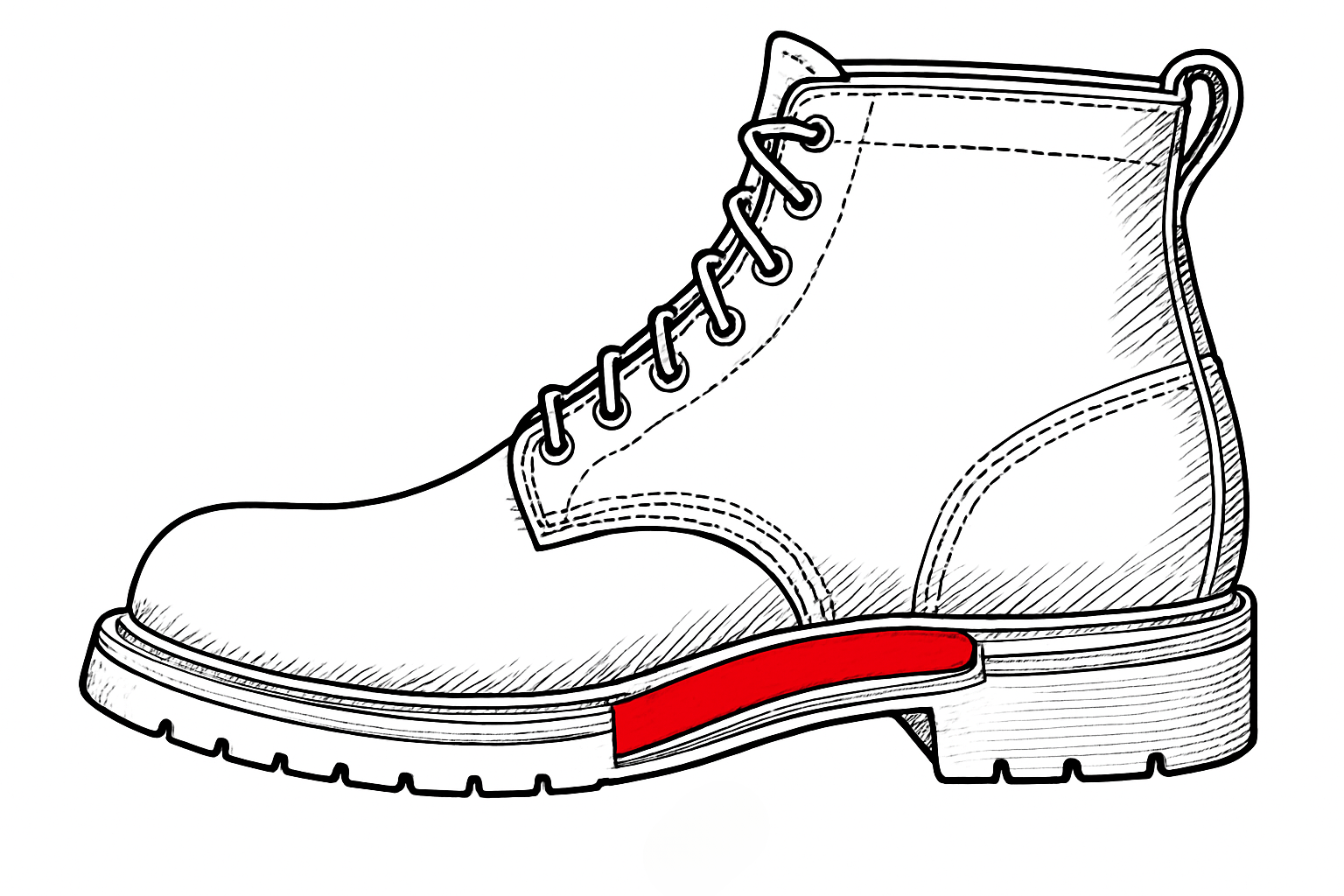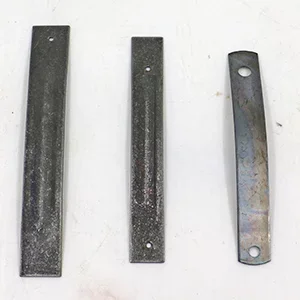What’s in a Shank? The Hidden Backbone of Your Boot
A deep dive into the part of the boot most brands never talk about—but we never ignore.
Most people don’t think about the shank.
Hell, most boot companies don’t either.
But you’re not most people—and we’re not most bootmakers.
The shank is the unsung hero of a good boot. Tucked deep inside, it doesn’t show up in photos or get mentioned in ads. But it’s doing the dirty work every time you take a step, shift your weight, or lean into a turn.
If the sole is your tire tread and the leather is your bodywork, then the shank is your frame. And if that frame is weak, brittle, or overbuilt, you’ll feel it.
So let’s tear this down and look under the hood.
What Exactly Is a Shank?
It’s a slim strip of material—about 3 to 5 inches long—running under the arch of the boot, sandwiched between the insole and outsole.
But don't let its size fool you.
The shank provides:
Structural support through the arch
Stability when walking on uneven terrain
Torsional strength so your boot doesn’t twist like a rag
Weight distribution to reduce fatigue over time
Think of it like a backbone—it’s not flashy, but without it, everything collapses.
Types of Shanks: Strength, Flex, and Function
Not all shanks are created equal. Some are cheap shortcuts. Others are built for extreme use. And then there’s the kind we use—designed for real-world wear.
Let’s break them down.
Wood Shank: The Old-School Compromise
Wood shanks have been around for over a century. And to be fair—they did the job, once upon a time.
Typically made from compressed board or hardwood, these shanks are stiff and offer decent arch support at first. But wood doesn’t age well. It dries out, cracks, and splits—especially under torsion or pressure.
And it doesn’t move with your foot. It fights it. So every step on uneven ground becomes a subtle battle between you and your boots.
I learned this the hard way.
When I transitioned from field work to the data center, I picked up my first pair of dress boots—they looked sharp, but under the hood? Wooden shank. It kept the sole stiff, sure, but it never flexed. I still remember the day it gave out—I was working on a ladder, shifted my weight, and crack. I felt it reverberate through my foot. That was the last time I trusted a wooden shank.
Bottom line: Wood is cheap, old-school, and prone to failure when you need it most.
Metal Shank: Built Like a Tank (And Rides Like One)
Steel shanks are a staple in heavy-duty work boots. They’re made to take a beating and come back for more. Zero flex, total support. Perfect for vertical work.
Back when I was an engineer, climbing towers, gaffing poles, and living half my day on a ladder, metal shanks were my go-to. They protected my foot and kept my arch from collapsing under strain. When you’re 40 feet off the ground, you don’t care if your boots are stiff—you care if they’re solid. And steel delivered.
But the flip side? They don’t move. At all. Steel turns every step into a rigid march. Over time, that lack of give starts working against you—especially if you're not in an industrial setting. They’re also heavier than all the other shanks and cold in winter, which can make daily wear a chore.
Bottom line: Perfect for linemen and tower workers. Overbuilt for guys climbing all day.
Leather Shank: What We Use, and Why
Now we’re in our wheelhouse.
A well-cut leather shank gives you that sweet spot between support and mobility. It holds up under weight, stabilizes your arch, and—unlike metal or wood—it flexes with your foot.
When we built our first prototype for Naang Boots, we tried a wooden shank. It just didn’t feel right. The boot looked great, but something was off underfoot—too rigid, too unresponsive.
On the second prototype, we switched to a full leather shank—and that changed everything. The difference in feel was immediate. The boot supported your step, but it didn’t fight it. The flex was natural, the fatigue was gone, and you could actually move in them.
That’s the moment Naang boots became what they are now—boots built not just to survive, but to ride and roam.
Leather shanks also break in with the boot. They mold to your foot, just like the leather around them. And they hold up—resole after resole, mile after mile. Quiet, strong, rebuildable. Everything we want a Naang boot to be.
Bottom line: Strong where you need it, flexible where it counts. Leather works with your foot—not against it.
Why We Chose Leather—And Why We’ll Never Go Back
At Naang, we believe a boot should move like an extension of your body—not like a cast on your foot.
That’s why every pair we make is built on a leather shank, paired with full leather fillers. It’s a platform that breathes, bends, and supports without suffocating your stride.
You’ll feel it when you ride, walk, or stand all day. The support is there, but it doesn't punish you. It rides with you, adapts with you, and stays with you.
Final Thoughts: Flex Matters
A good boot isn't just tough—it’s smart. And that intelligence starts with the shank.
Wood breaks. Metal fights.
But leather remembers. It adapts. It molds. It lasts.
That’s why every Naang Boot starts with a leather backbone—because whether you’re straddling a motorcycle, climbing switchbacks, or hauling ass through your workday, your boots need to move like you do.



